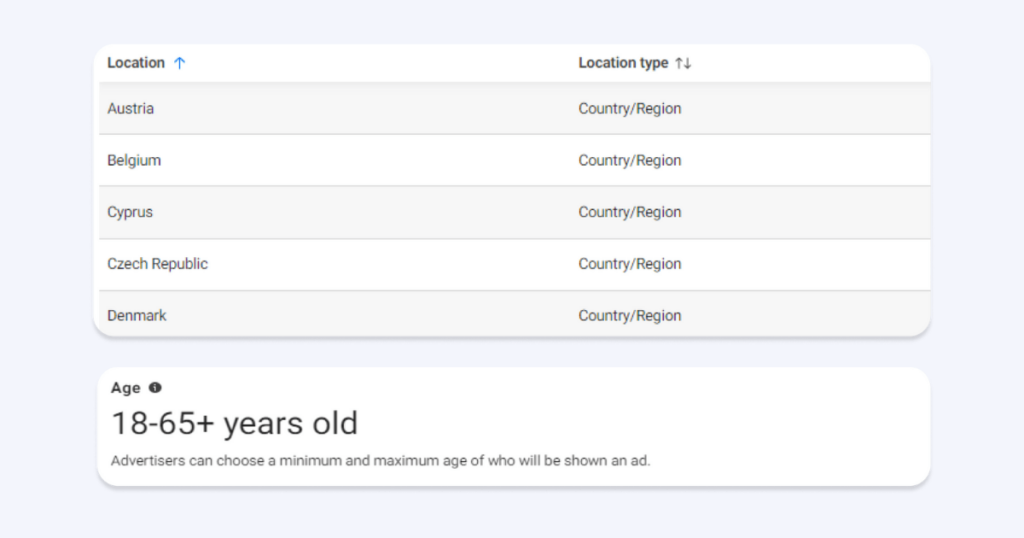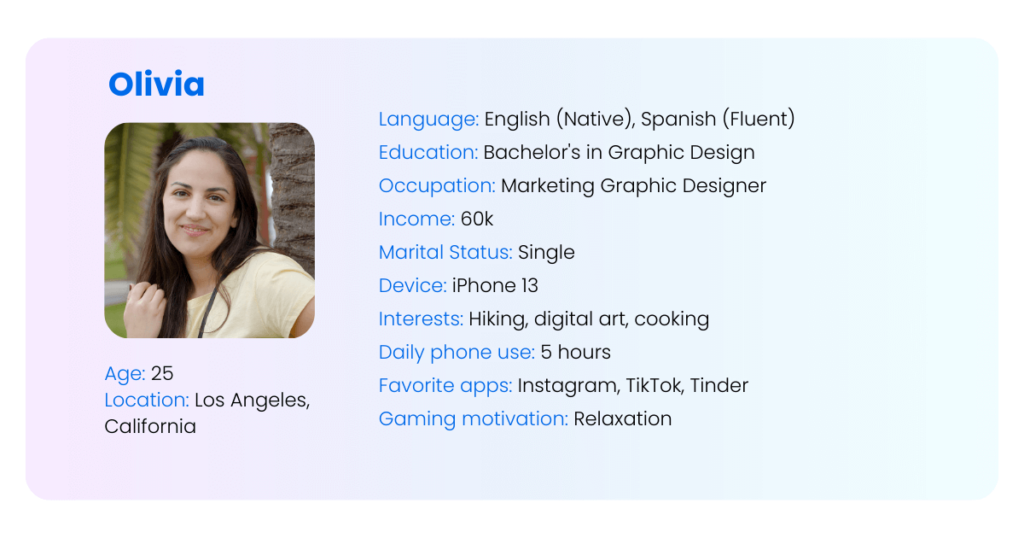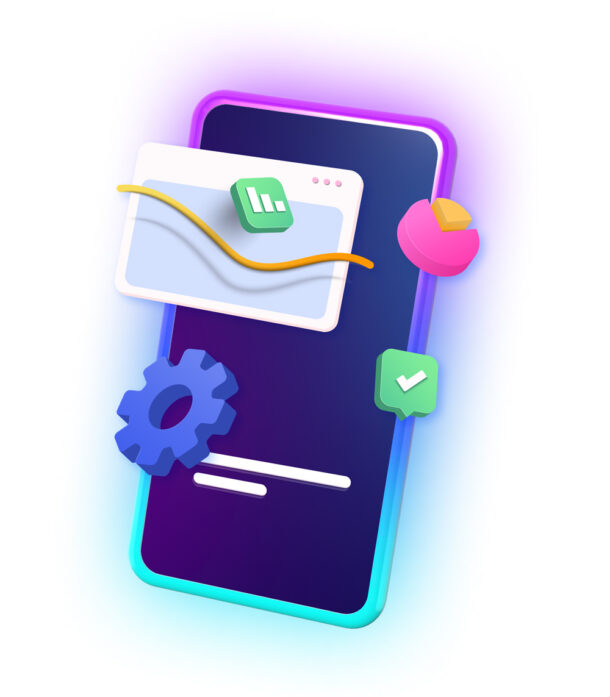Have you ever been served ads for apps that you have zero interest in?
We certainly have.
To prevent this from happening, it’s vital to do mobile audience targeting right.
No matter how great a certain app might be, it’s not meant for everyone. It’s almost impossible for the same app to be equally attractive to, for example, 20-year-olds and 60-year-olds.
To make sure their UA efforts pay off and their apps reach the right people, advertisers need to pay special attention to mobile audience targeting.
This guide covers everything you need to know about this critical aspect of app marketing, so let’s dive right in!
Target Audience For Mobile Apps
You can think of mobile audience targeting as a game of darts.
The dartboard represents your target audience and the darts represent your ads. If your throwing is accurate, you’ll get a high score. Ideally, you’ll hit the bullseye. The same goes for user acquisition — the better you aim, the more points you earn in the user acquisition game.
The foundation of successful mobile targeting is having a clearly defined target audience. Simply said, your target audience is a group of people that your app is intended for. These are people who need your app, find it enjoyable, and are most likely to continue using it.
Knowing who your target audience is will help you figure out where, when, and how to reach them through your UA efforts.
Aside from UA, defining the target audience for mobile apps plays a major role in app development, including monetization, UX/UI design, and product updates.
Defining the Target Audience: 4 Key Steps
The success of your UA campaigns depends on recognizing and connecting with the right users. Before you go ahead and place ads on ad networks, it’s vital to define the target market of your app.
It doesn’t have to be perfectly detailed.
However, you should have a general idea of who might be interested in your app. Defining the target audience is a process that consists of several steps, so let’s break them down.
1. Understanding the Value of Your App
The first step to understanding your audience is to reflect on your app and its purpose.
To do this, you can ask yourself the following questions:
- What problems does my app help solve?
- Who can benefit from using it?
- How would they use it?
The answers to these questions will give you a solid foundation for your mobile audience targeting strategy. After taking these baby steps, it’s time to tackle more challenging tasks of the process.
2. Competitor Research
When it comes to mobile audience targeting, your competitors are a valuable source of inspiration.
Try to find out:
- What target audience are they going after
- What they offer to their users
- How satisfied are their users
- What are their main shortcomings
By analyzing your competitors’ strategies, you can identify their biggest strengths and weaknesses. These insights will allow you to identify gaps and detect the best targeting opportunities for your app.
Let’s say you want to analyze a competitor’s gaming app. To learn about its targeting strategies, you can check out its app store listings, social media accounts, and if possible, ad creatives.
For example, by looking at a game’s ad creatives in the Meta Ad Library, you can find out a lot about its UA strategy.

This is especially true for European countries where a special EU transparency policy allows you to look into targeting details for each ad. This includes the targeted locations, age targeting, as well as detailed reach insights.
3. Identifying User Demographics
Many people think that targeting equals demographics.
Even though this isn’t true, it tells you all about the importance of demographics in mobile targeting.
Your target audience is a group of people with shared demographic characteristics and interests. These include:
- Location. Decide whether you aim for a global presence or a strategic focus on specific countries or regions.
- Age. Think about which age groups are most likely to use your app. Make the age range wide enough to cover a specific generation. For example, 20-50 is too broad, while 45-54 is a good age target.
- Gender. Depending on the nature of your app, it might be more appealing to men or women, so make sure to put more focus on the dominant group.
- Language. Typically linked to the locations of the target audience, determine which languages you need to localize your ads for.
- Education. Understanding the educational backgrounds of your target audience helps create campaigns that resonate with their knowledge level.
- Occupation. This characteristic gives you valuable insights into the purchasing power and daily app usage of your target audience.
- Marital status. A person’s marital status (single, married, divorced, widowed) has a significant inrfluence on how they spend their time and income.
- Devices. Determine if you want to focus on iOS or Android users, or both, and which type of device your target audience uses (smartphone, tablet).
- Interests. Targeting by interests significantly increases ad relevance. For example, the audience of a calorie-counting app is likely to have an interest in sports and fitness.
4. Creating User Personas

Effective mobile audience targeting stretches beyond competitor research and app demographics.
To really understand your users, give them a name and a face.
To achieve this, app marketers create user personas — fictional profiles that represent different types of people who might be interested in their app. Using this strategy, marketers can look beyond numbers and data, visualizing the real people they want to reach.
User persona profiles usually include demographic information, personality traits, and motivation for using the app.
How many of these should you make to define your mobile app target market?
A single target audience usually consists of several groups of people with shared characteristics. For this reason, it’s recommended to create at least five different personas per one target audience (AppRadar).
Why Is Precise Mobile Audience Targeting so Important?
You are now familiar with all the steps to define a target audience for mobile apps.
But what makes all that hassle worth it?
Let’s go over the top benefits of targeted mobile advertising.
Cost-Efficiency
Precise mobile audience targeting minimizes budget wasting.
Instead of casting a wide net and reaching users with minimal interest in your app, you focus on the people who are most likely to engage. In other words, you’re investing your resources where they matter most, optimizing your budget for maximum returns.
Result?
Improved ROAS (return on ad spend), conversion rates, and a reduced CPA (cost per acquisition).
Improved Retention Rates
Targeting the right mobile audience is not just about acquiring users — it’s about acquiring quality users.
If your UA strategy aligns with the needs and preferences of your target audience, this improves its potential for long-term retention.
A great example of this is offerwall advertising. Offerwalls allow for precise mobile targeting by letting advertisers show their ads to the most relevant users, considering their behavior and interests. As a result, this ad format delivers quality users with superb retention rates and loyalty levels.
Leveraging Familiar Patterns
Similar groups of people tend to behave similarly over time.
This opens the door to leveraging mobile audience targeting for predictive insights.
Once you’ve precisely defined your target audience, you can closely examine their behavior patterns.
By understanding your target audience’s past behavior, you can then strategically optimize campaigns, steering clear of common pitfalls and boosting their overall effectiveness.
Let’s say you have a shopping app targeting women in Germany. Analyzing the past behaviors of this target audience, you may find out they were particularly drawn to limited-time offers during the country’s public holidays. This insight tells you to plan special campaigns featuring exclusive deals for the next German public holiday.
Optimizing UA Creatives
Having a clearly defined target audience for mobile apps allows you to craft visuals and messages that will resonate with them.

Say you want to reach a specific generation in a specific country. For example, Gen Z users in the United States. To catch their attention, it might be a good idea to create ads that resemble TikTok videos and use American artists’ songs popular among this generation.
This tailored approach increases your chances of getting noticed by the right people. By knowing who your target audience is, you can create ads that match their interests, helping you stand out from the competition.
Choosing the Best Ad Networks
Armed with insights about the demographics and preferences of your target audience, you can strategically choose the best ad networks to reach them.
The key question is — where do they spend most of their time?
Understanding where your target audience is most active allows you to select ad networks that match their online habits, ensuring that your ads reach them where they are.
Let’s say you want to target people aged 27-42 (Millennials). When it comes to social media, Millennials mainly use Facebook (71%), Instagram (62%) and TikTok (37%), according to Tapjoy.
If you’re interested in targeting Millennials playing mobile games, look for ad networks that work well for their favorite game genres. For this generation, these are puzzle, RGP, and action/adventure games (Tapjoy).
Need Help With Mobile Audience Targeting?
If you’re struggling with finding the ideal target audience for your app, we can help you out.
At MAF, we’re experts in connecting apps with the right people.
Explore our advertising solutions and find out how you can reach new, high-quality users who will love your product!







